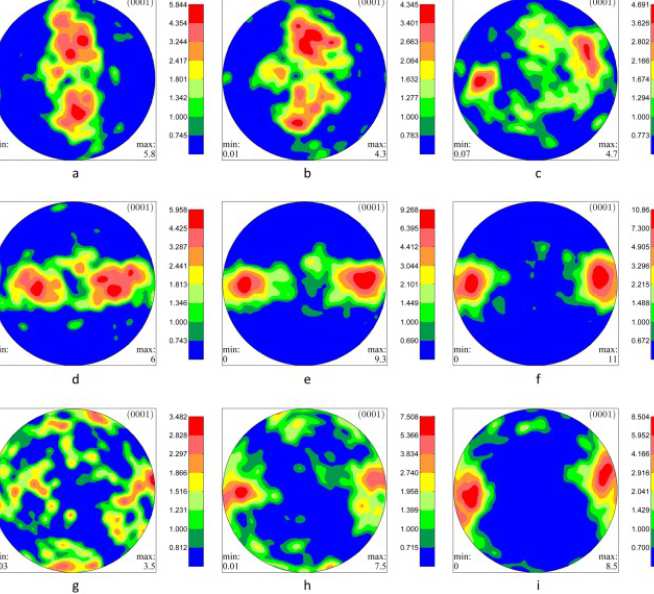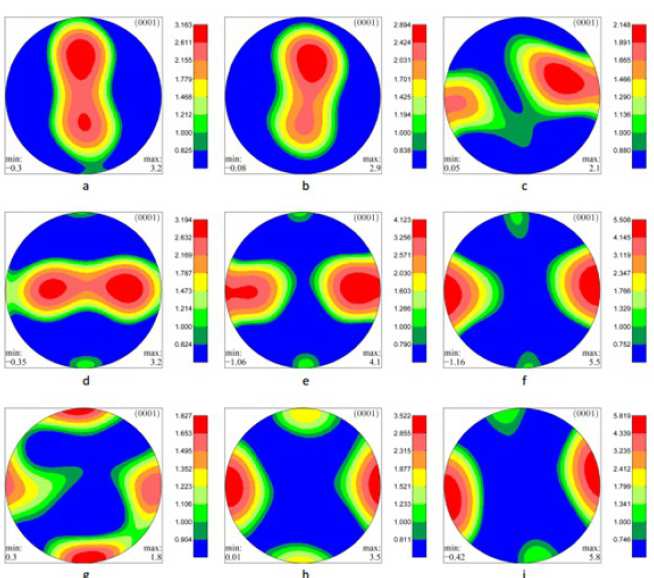
Hexagonal close-packed (HCP) (e.g. Ti and Zr) and cubic (e.g. Fe, Al, Cu, Ni and many more) materials are highly anisotropic at the single crystal level, thus the crystallographic orientation distributions (aka textures) in their polycrystal aggregates, are of great importance in determining their macroscopic properties. Current texture detection methods, be it X-ray diffraction, EBSD or surface acoustic wave methods, all have their drawbacks and are not able to fulfil the industrial needs of non-destructive bulk texture measurements. We are trying to achieve this goal by means of ultrasounds.
We have developed theoretical solutions to the long-standing inverse problem of extracting bulk texture in polycrystalline HCP and cubic aggregates from their angular ultrasonic wave speed variations, and the techniques have been successfully applied on the wave speeds generated by a finite element (FE) model for a range of different textures, as shown by some exemplary pole figure plots (which shows the distribution of a certain reciprocal lattice vector of the crystals. In this case, the (0001) vector of the HCP crystal) obtained purely from wave velocity. The planned next steps for this project are firstly experiments on real samples for a bona fide proof of principle of the technique, and, if they turn out to be successful, a possible device development.
